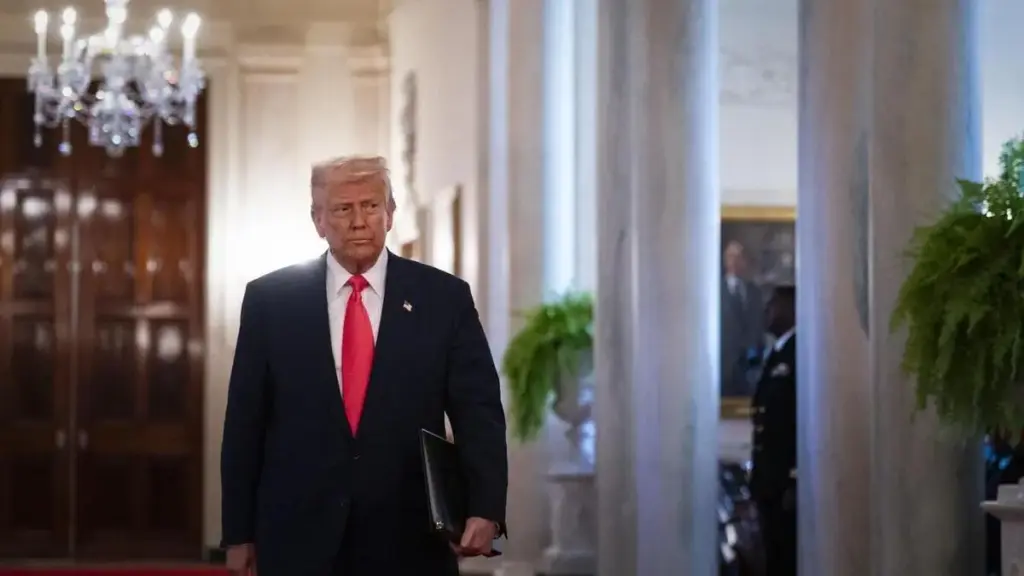In the midst of the trade war between the United States and China unleashed by Donald Trump, Chinese traders and small business owners are starting to feel the impact on their wallets. The prevailing sentiment is one of concern, as Beijing is working to prevent panic from setting in.
Tariffs and Retaliatory Tariffs between the US and China
After a back-and-forth of tariffs and retaliatory tariffs, the US administration has increased tariffs on Chinese imports to a staggering 125%, while China has retaliated by applying an 84% tariff on American goods. While some international actors have rushed to the negotiating table to try to defuse the bomb of trade retaliation, paused for 90 days by Trump, Beijing has made it a matter of principle and has vowed to “fight to the end” against “American bullying.”
As Xi Jinping’s regime talks tough and assures that “the sky will not fall,” Chinese entrepreneurs are alarmed, especially those working in the e-commerce sector, as the US has increased tariffs on packages valued at less than $800 from 30% to 90%.
The Impact on Chinese Businesses
“The other day I dined with many Chinese entrepreneurs from Guangdong who produce in Vietnam and then export to the United States,” recounts an entrepreneur from Guangzhou who produces electronic products. “For now, they have stopped accepting orders from the US. Another company that had just moved to Vietnam from Hong Kong, opening a factory in Ho Chi Minh City, is already thinking of shutting it down. Because if prices rise, our products are no longer competitive.”
Mr. Zhu runs an e-commerce business in Jiangsu and is terrified: “The tariffs will have a huge impact. There is no more profit to be made, and business cannot be done. Many companies will be forced to close.”

Trump and Vance’s Provocations against China
In 2024, China exported $440 billion worth of goods to America and imported $144 billion. This led US Commerce Secretary Howard Lutnick to declare that “Beijing has everything to lose” from the trade war.
As if that wasn’t enough, on Tuesday Vice President J.D. Vance angered Beijing by speaking disparagingly about Chinese workers in an interview with Fox News: “We are amassing a huge debt to buy things that the rest of the world produces. I want to be even clearer, we are borrowing money from Chinese farmers to buy the products those farmers produce. This is not a recipe for economic prosperity, nor for keeping prices low, nor for creating jobs in America.”
The Three “D’s” Putting Xi in Trouble
Seen from Beijing, this trade war comes at the worst possible time. Xi Jinping has been trying for years to address the three “D’s” plaguing his country’s economy and undermining its rise: demographics, debt, and deflation. The Chinese population has been declining since the ’80s, and even though the one-child policy ended in 2016, deaths have consistently surpassed births since 2022.
Last year, debt reached 303% of GDP, with growth slowing down and estimated at 5% for this year. While Beijing can rely on a positive trade balance of $990 billion, domestic consumption is stagnant due to the slowdown in infrastructure investments and the real estate sector. The deflation cycle is far from over.
The War on Equal Terms
As noted by Danilo Taino in the Corriere, this trade war situation is relatively new for China because it is no longer a clash of two opposing systems – free market on one side and dirigiste statism on the other – but identical ones. Trump has adopted the illiberal Chinese model, characterized by “protectionism and government-directed economy.” China is being fought with its own weapons, and Beijing is not used to this.
Many observers believe that there is no alternative to negotiation and that Chinese and American envoys will soon sit at the table. The future, as always with Trump, is unpredictable. But the tycoon has made an opening: “China wants to make a deal,” he wrote on Truth. “We are waiting for their call. It will come!”
After announcing a retaliatory tariff on US imports mirroring the one imposed by the US on Chinese goods, bringing US product tariffs to 84%, in the White Paper on US-China trade published yesterday, Beijing wrote that it wants to communicate with Washington to “resolve the frictions between the two countries.”



